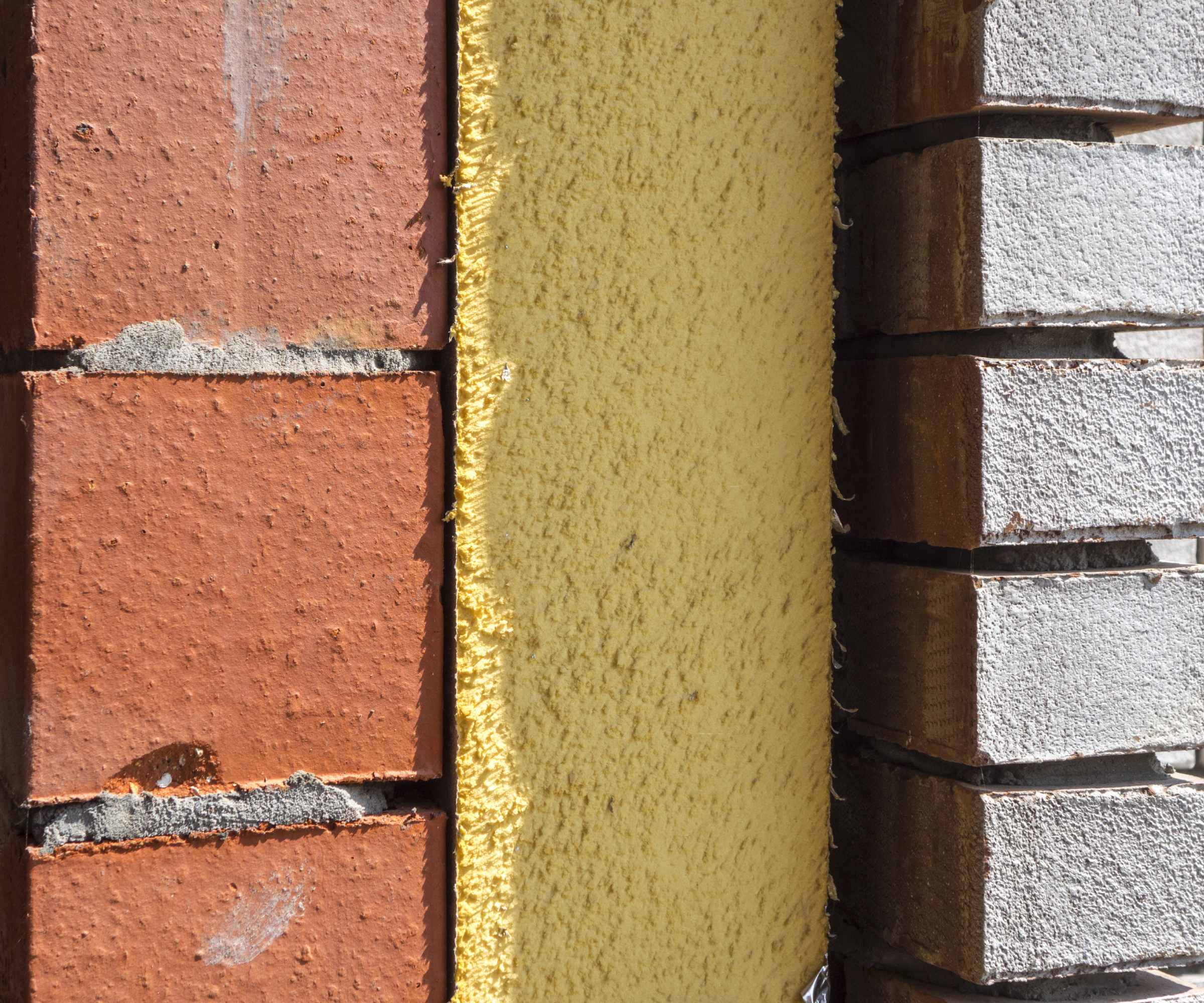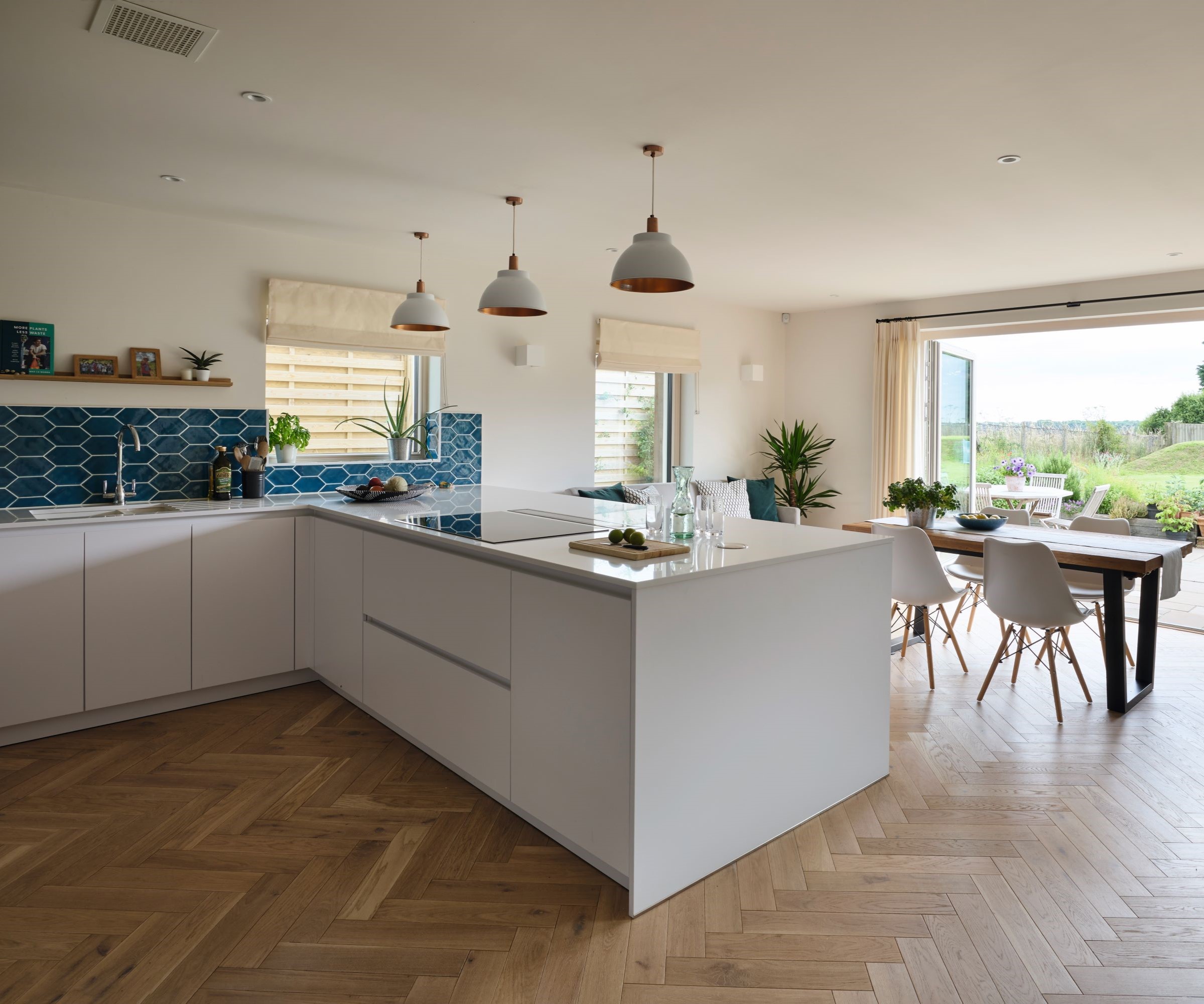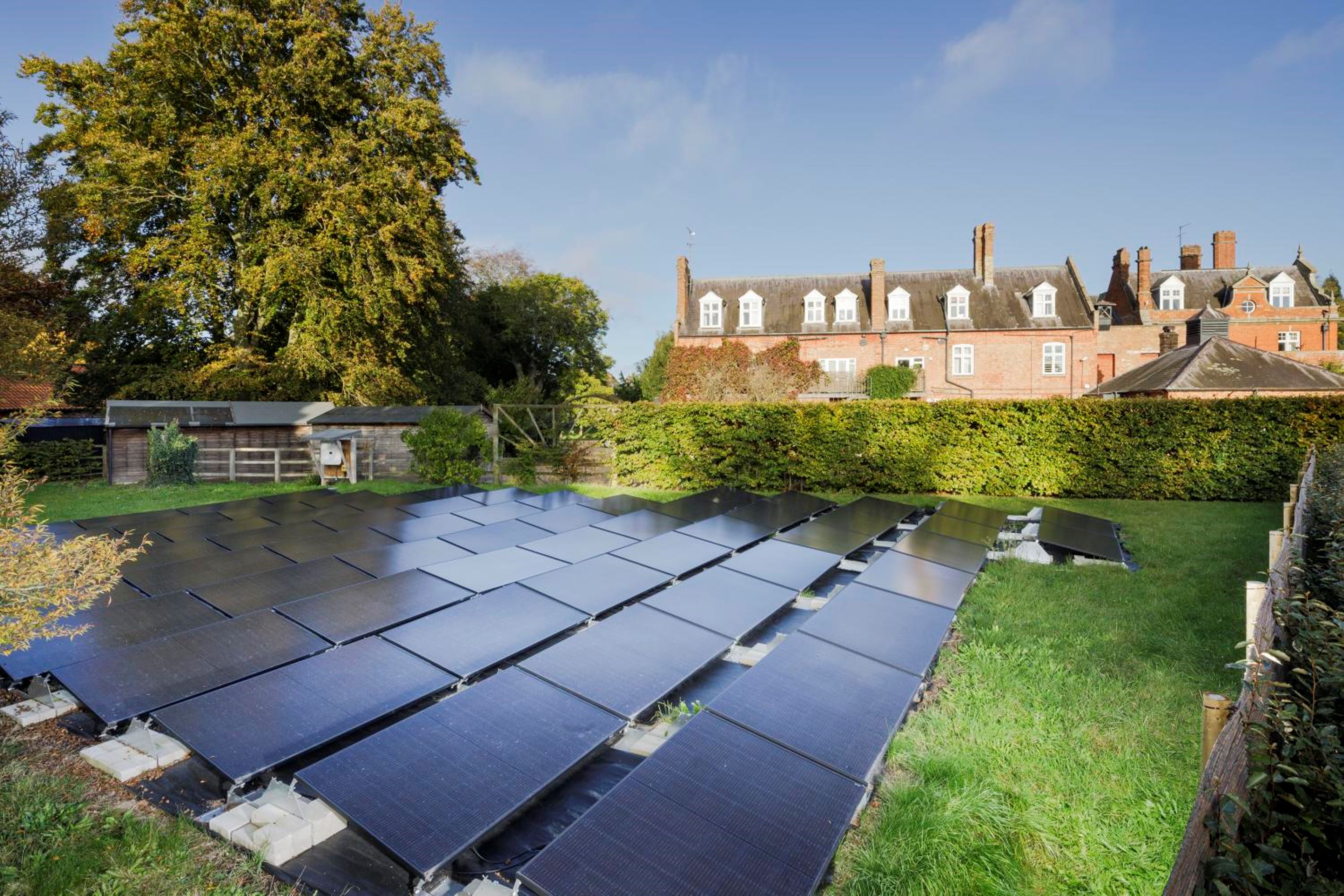How much does insulation cost? What to budget for when trying to improve your home's energy efficiency
Want to warm up your home and improve its energy efficiency? Our expert advises on insulation costs so you can budget for the necessary work

Insulation remains one of the best ways of enhancing energy efficiency, reducing utility bills, and improving the year-round comfort in your home. And, whether you're renovating, extending or building a new home, when correctly specified, home insulation is going to save you money in the long run.
Insulation costs however do depend on the type of property you own, the area that needs insulating, and the material chosen.
In this guide to insulation costs, expert quantity surveyor, Tim Phillips, breaks down your options and costs for the four main areas of your home that need insulation: lofts, floors, cavity walls and external walls, so that you can calculate just how much to set aside for the future.
Factors influencing insulation costs
Understanding how to budget for your insulation costs requires taking a look at the different factors that can affect them. From the more obvious ones such as the type of insulation, through to more complex matters such as meeting Part L of the building regulations, here's what you will need to take into account.
New build vs retrofit
Although insulating an older home can have a positive impact, the downside is that installing insulation in an existing home can be much more problematic and costly.
In older properties, such as considering how to insulate a Victorian house, this may involve additional preparation such as removing old material, correcting any defects in the original structure, or accessing areas difficult to reach, such as narrow loft spaces.
Where plumbing or electrical services have been installed, it may also be necessary to adjust the insulation method accordingly, such as when adding internal wall insulation.
Most of the time, it is less complicated and more reasonably priced in new builds to install insulation as part of the building process. More materials can be used, and the insulation can be scheduled with other systems to ensure a hassle-free installation.

Size and type of insulation
The material type of insulation you need to install also varies in cost. Certain types are costlier because of the fact that they offer better performance regarding heat, or because of their close association with nature. As an example, rigid foam insulation boards are more costly compared to regular fibreglass rolls.
The thicker the insulation, the more your insulation costs will rise too. Thicker products consume more material, hence, the cost increases. However, a thicker product will have better thermal and acoustic performances and may save you more money in the long run.
Ease of access
Access to the location where insulation is needed can also impact your insulation costs. Installing loft insulation can be more labour-intensive and expensive if the loft area is hard to reach or if it does not have much headroom. Likewise, cavity wall installation costs might be higher than normal if the cavities are narrow or wonky.
For an existing home, insulating floors might also be a little challenging if there is not that much crawl space in your suspended timber floor, or if the concrete floor needs to be raised.

Labour costs
The cost of labour depends on a number of factors.
1. Complexity and location: In a retrofit installation, more specialised labour can be required, especially if existing homes have to be repaired or modified. Likewise where you live will result in generally higher labour rates for any work.
2. Size of the property: This automatically drives the cost up as larger homes will be more expensive to insulate simply because it will take more time and material to carry out the job.
Energy efficiency goals
Those homes that are looking to achieve strict energy-efficiency standards like Passivhaus for new builds, or Enerphit for retrofits ,will need specialised insulation. The inclusion of these standards into a design raises the cost significantly, especially for new builds.

Building regulations
Building regulations may require higher levels of insulation in areas of lower temperature, such as Scotland and Wales, which will increase your insulation costs. The same happens if the property needs to conform to a certain thermal and acoustic performance, which often increases the cost of new builds and retrofits alike.
Average insulation costs
All of the cost estimates that follow should be used as a general guide only, with considerable regional, size, and material differences to be expected.
However, having a general idea of installation cost estimates and possible savings will give you some proper ground on which to base your decisions regarding the type of insulation that best meets your needs and budget.
For an average three bedroomed semi-detached property, you can expect to pay the following average insulation costs:
Insulation type | Average cost |
Loft (blanket roll) | £962 |
Internal walls (solid walls, insulated plasterboard) | £7800 |
External walls (solid walls, polystyrene board) | £12400 |
Cavity walls (cellulose) | £2795 |
Suspended timber floor (PIR board) | £4860 |
Cost-effective loft insulation
Loft insulation maintains warmth during winter and keeps heat out during summer; this is simultaneously one of the most accessible and cost-effective methods to reduce heat loss. Heat rises, and as a result, up to 25% of a house's heat loss might be attributed to an inadequately insulated loft.
- Material cost: £5-£15 per square metre
- Installation cost: Approximately £300-£400 for a standard-sized loft in a semi-detached house
- Total cost: For a semi-detached house, the total would be in the range of £600-£1,000, but this may go up for thicker ones or the greener alternative
- Savings: Loft insulation can save from between £150 and £250 annually for heating for a semi-detached house.
Calculating internal wall insulation costs
It is possible to insulate solid walls significantly in order to reduce heat loss, since they tend to lose roughly about twice the amount of heat compared to cavity walls.
In such a situation, internal wall insulation significantly enhances thermal performance and is usually applied to internal solid walls. It is particularly suited for older solid-walled houses, as a lot of these were built pre-1920s, and looking at insulation for cavity wall construction is not an option. It can also be a good option for houses undergoing extensive interior renovations.
The main choices available to you are insulating internal walls with plasterboards comprising insulation adhered to the back. This is quick to install and less disruptive. Or, stud wall insulation in which a stud frame is erected against the wall and packed with insulation – most commonly mineral wool, but sometimes foam board. It provides superior insulation, though at a higher price while taking lesser inner space.
- Material cost: £20-£50 per square meter for insulated plasterboard or similar material
- Installation cost: £4,000-£7,000 for an entire house-inside wall insulation, usually for semi-detached houses
- Total cost: Overall, it costs between £7,000 and £10,000 for an average home
- Savings: The saving on the annual energy bills ranges from £200 to £450, depending on the size of the house and how much it has been insulated
Costs for insulating a solid external wall
External wall insulation includes the addition of an extra layer of insulation externally to the walls, which is then covered by a protective finish in an aesthetically acceptable finish.
This insulation reduces heat loss and weatherproofs the house. It is ideal for solid wall properties but works best in older homes where aesthetic or structural features allow for external modification. It is also recommended in cases when homes need an exterior facelift.
Insulation polystyrene boards are the lightest in weight and cost and will offer minimal disruption installation. Mineral wool boards on the other hand are mid-range and do offer good fire resistance and thermal performance. But, if your main goal is high energy efficiency, expect to pay extra for phenolic boards to meet your needs.
- Material cost: Material prices vary in the range of £50-£100 per m/2
- Installation cost: In a semi-detached house, the full installation price varies from £8,000 to £13,000, depending on the wall size and finishing
- Total cost: The estimated expenditure is roughly £10,000-£16,000 for an average semi-detached house
- Savings: EWI presents the possibility of saving between £250 and £450 per year, while savings are related to the size of a house and insulation levels
Working out cavity wall insulation costs
Most houses built after the 1920s have cavity walls, meaning there is a gap or cavity between an inner and an outer layer of brickwork. It is possible that filling this cavity with insulation is one of the most successful things you can do to avoid the loss of heat.
Suitable for houses built between the 1920s and 1980s, cavity walls that are not filled are ideal for upgrading.
However, make sure you avoid unnecessary costs by checking whether you're in an area where your cavity shouldn't be retro-filled due to the amount of wet weather it receives. Wales, Scotland and the West coast of England are a no-go.
- Material costs: £5-£20 per m2
- Installation costs: The installation price ranges between £800 and £2,750 for an average retrofit of a semi-detached home
- Total cost: Generally, falls between £1,600-£3,500 for most semi-detached properties
Savings: Around £100-£250 on the annual energy bill is possible.
Budgeting for floor insulation
Adding floor insulation is very effective on ground floors, especially in unheated areas or in houses with suspended floors. It inhibits heat loss through the floor so that the ground floor areas feel warmer and more pleasant.
It can again be particularly useful for older properties where the floors may be quite draughty. Insulating suspended floors and insulating concrete floors are both achievable, and are good options for those renovating or extending a property.
- Material costs: The prices for materials start at £10-£20 per m2, using either rigid foam boards or their eco-friendlier counterparts
- Installation costs: Prices vary between £1,000 and £3,500, depending on the property size and its access points
- Total costs: Generally, it costs between £1,200 and £5,500 for an average house
- Savings: Potential to save £40-£100 per year on heating bills, although again it depends upon the property and the amount of insulation applied
Obtaining accurate quotes for your insulation costs
Like any element of work, it is worth getting at least four quotations for the different insulation projects, so you will be in a better position to compare costs and ensure that you are not charged an unfair price.
For best value against the money invested, comparison of quotations needs to be done by homeowners based on a number of key elements. Some of the most important factors to consider include:
- Insulation thickness – The performances of the insulation layer can be bound by its thickness regarding thermal and acoustic insulation. Compare how each quotation stacks up against one another for insulation thickness and their effectiveness in meeting your energy-saving goals. Check the 'U' value of the proposed insulation and ask for a thermal desk study to see what the finished thermal efficiency of the wall will be for differing options
- Installation technique – Note the recommended installation method for each quote provided, especially if your job is a retrofit. Find trustworthy insulation installers who can provide references for previous insulation installations. If it's a new build, then your bricklayer will be fitting the cavity wall insulation as the walls are built, or it may already have some insulation in situ if you're using MMOC (Modern Methods of Construction), i.e., structural insulated panels (SIPs), timber frame or insulated concrete formwork (ICF)
- Energy efficiency gains – With each insulation method, determine any potential energy gains that could be associated. Some estimates may give rough projections of future energy savings, which may be used to justify the upfront cost
Money-saving opportunities
Several insulation projects, due to their simple nature, are likely to attract some kind of government subsidy, incentive, or energy-efficiency drive to upgrade old housing stock.
Availability of such programs can lower the initial costs of retrofits so it’s certainly worth looking into the financial opportunities and grants the government makes available for energy-efficiency improvements. Incentives like these can vastly bring down the overall cost of installations, making them more accessible.
The easiest and quickest route to application is the government’s online eligibility checker. You will subsequently be asked about your address, council tax band and energy supplier, whether you are a landlord, renter or homeowner. Homeowners should investigate all avenues of funding and qualifying criteria before embarking on an insulation project. Moreover, you secure multiple quotations and work with accredited installers so that you maximise any subsidy or financing.
Money-saving options available include:
- ECO 4 (Energy Company Obligation 4): This is an ongoing government scheme whereby larger energy firms are required to fund home energy-efficiency improvements. Under ECO 4, your home might qualify for free installation, or at least highly subsidised external and internal wall installation, particularly for low-income and/or those in receipt of certain benefits
- Great British Insulation Scheme: A government scheme to help British homes be more energy-efficient. The scheme targets the least energy-efficient houses in the nation and is looked after by Ofgem, which aims at easing fuel poverty and reducing energy costs for households in general
- Local authorities: They often make funds or grants available to facilitate energy-efficient improvements, which are going to be the installation of external and internal wall insulation through the ECO Flex and LA Flex schemes. Homeowners should check with their council's website or make contact directly as to whether a grant is available and what the eligibility criteria are, since these schemes vary by area
As part of assessing your insulation costs, you maybe looking to understand whether you will get a return on your investment before you need to replace your insulation. Arm yourself with the facts by reading our guide to how long does insulation last and weigh up whether including some eco-insulation into the equation will give you the green home credentials you desire.
Get the Homebuilding & Renovating Newsletter
Bring your dream home to life with expert advice, how to guides and design inspiration. Sign up for our newsletter and get two free tickets to a Homebuilding & Renovating Show near you.
Tim Phillips is an experienced senior quantity surveyor and estimator and has worked in the construction industry for over 35 years. He has worked on many varied projects in this time, for corporates, public bodies and private residential clients, managing multi-million budgets.
For the past 13 years, Tim has worked on a freelance basis, whilst managing his rental property portfolio. He has extensive experience of undertaking his own full-scale house renovations. He is also a speaker and expert at the Homebuilding & Renovating Shows.
